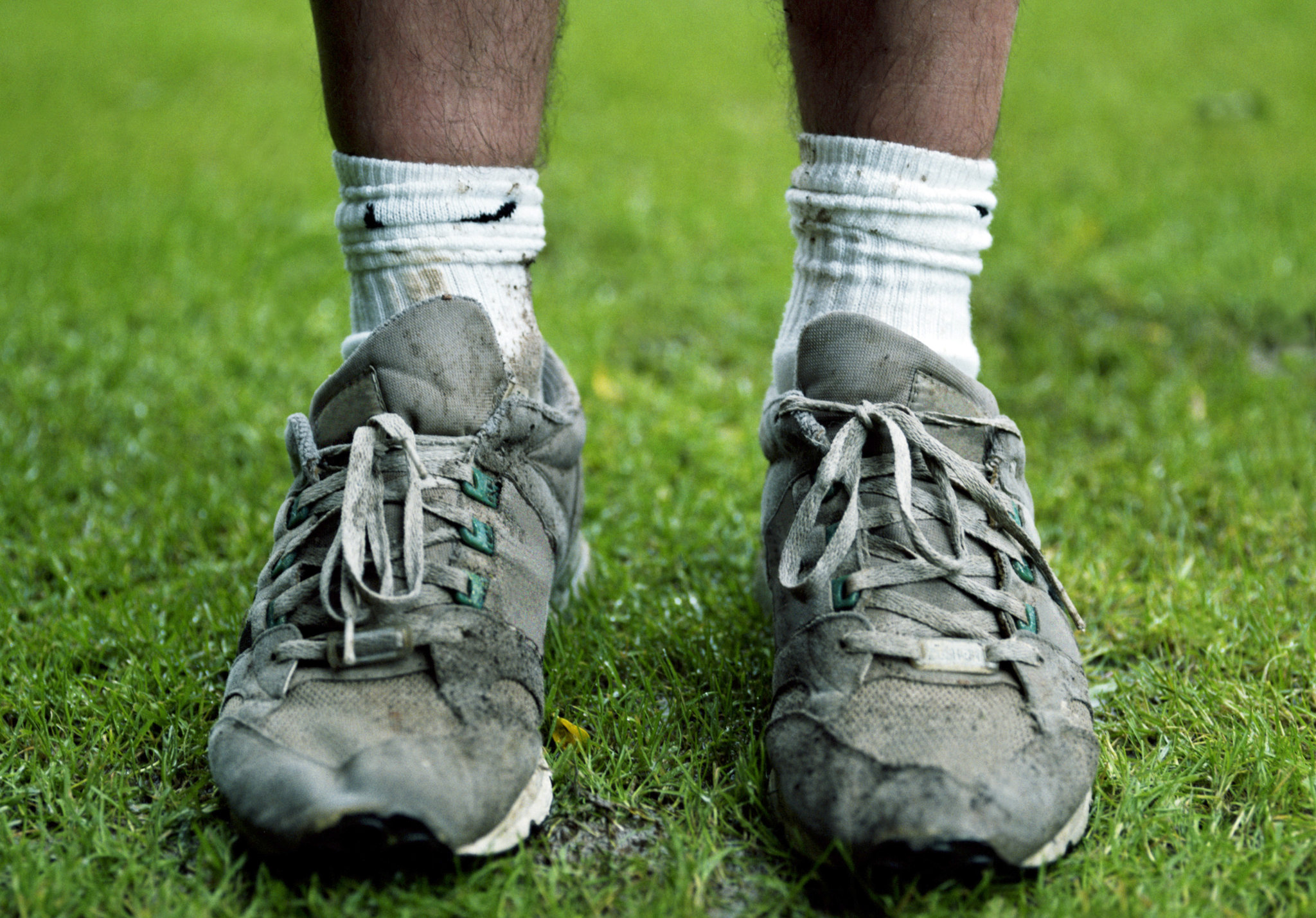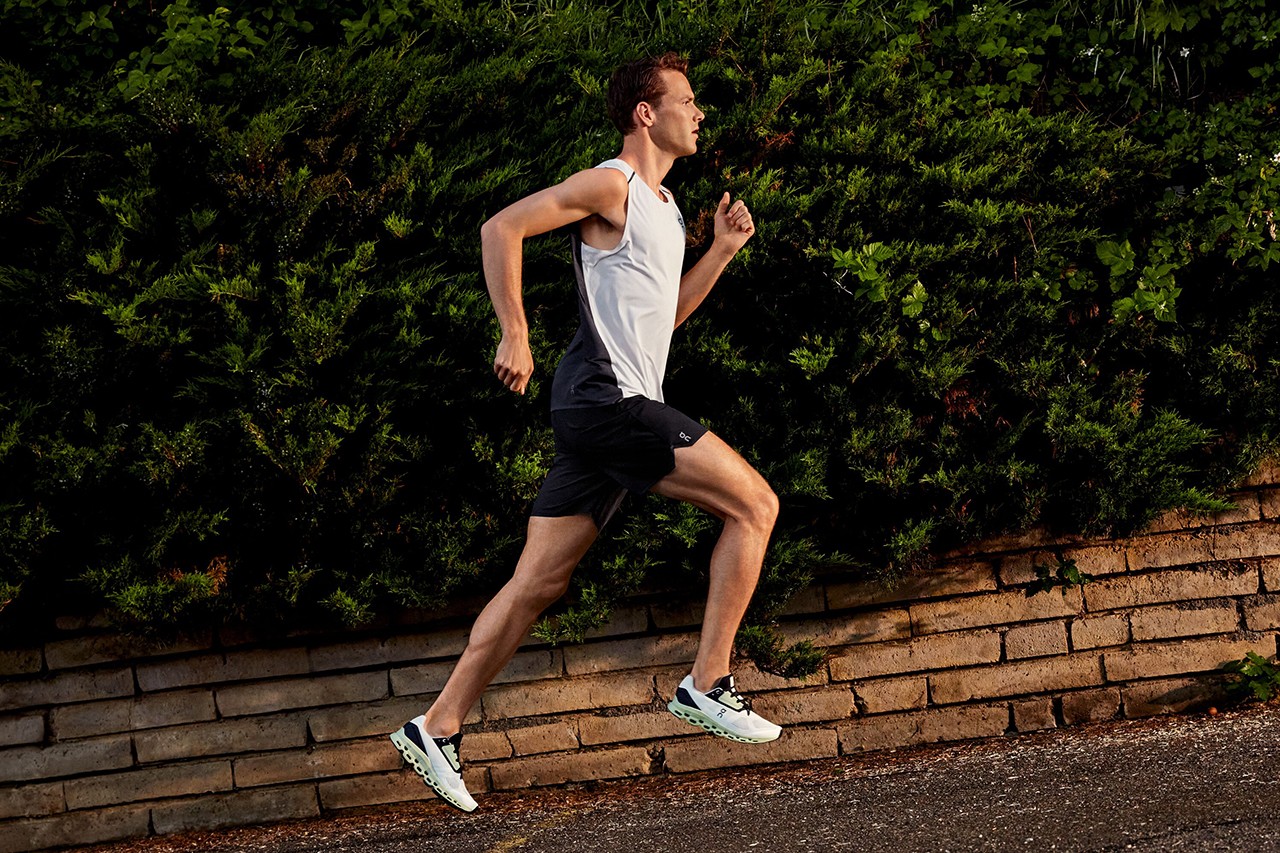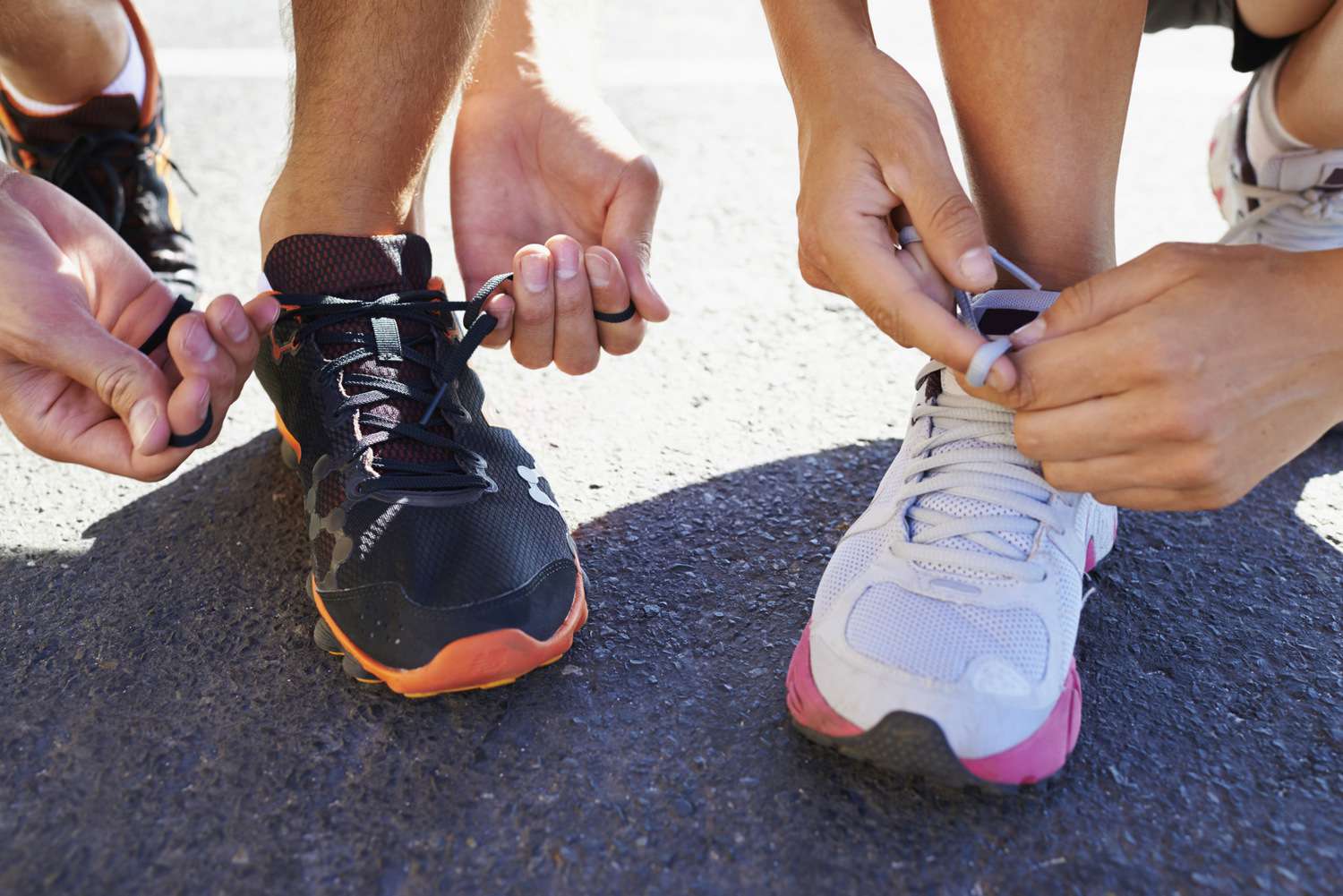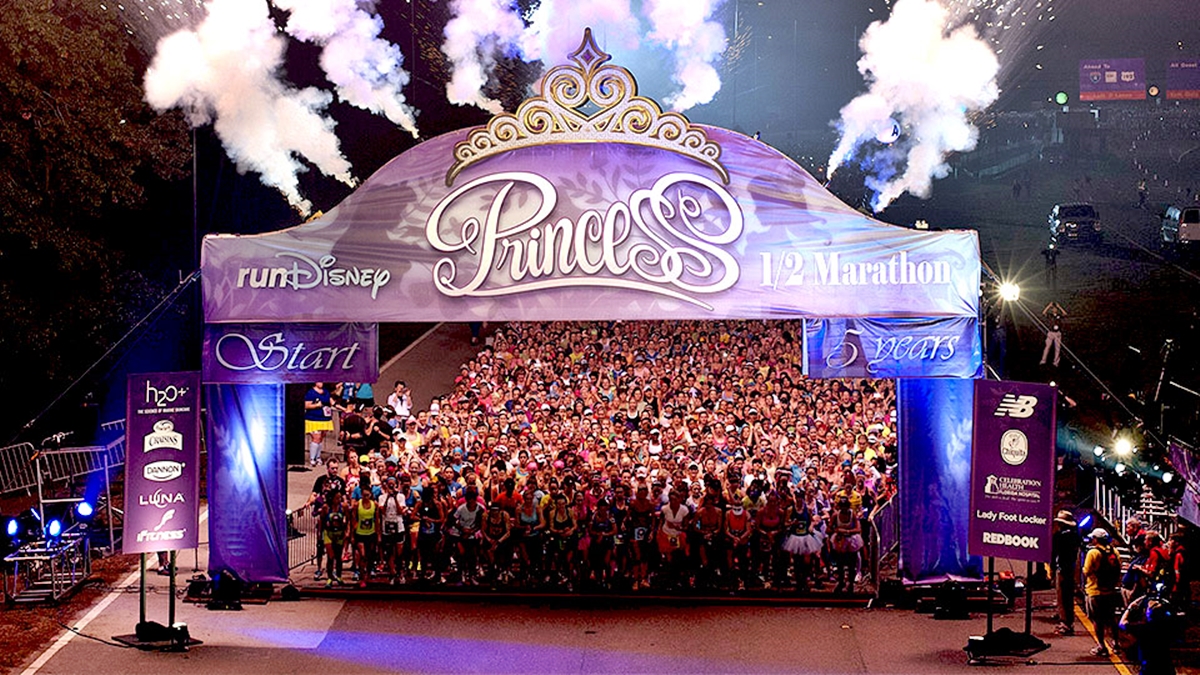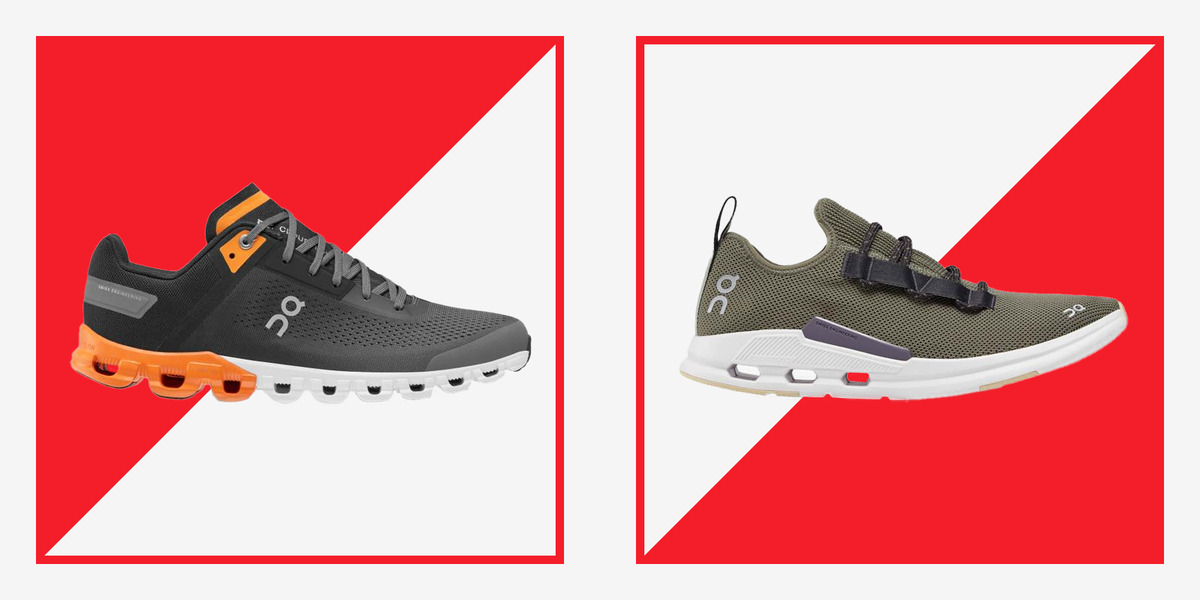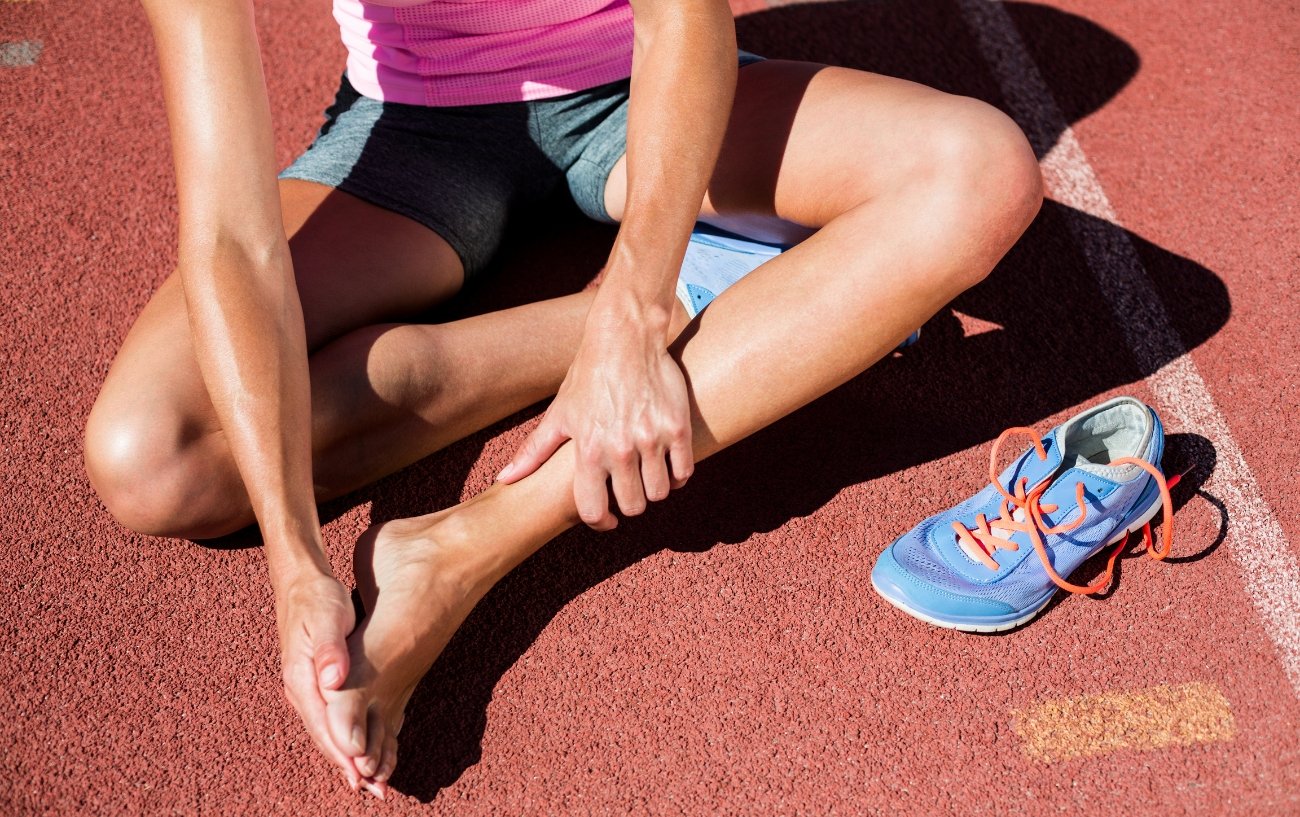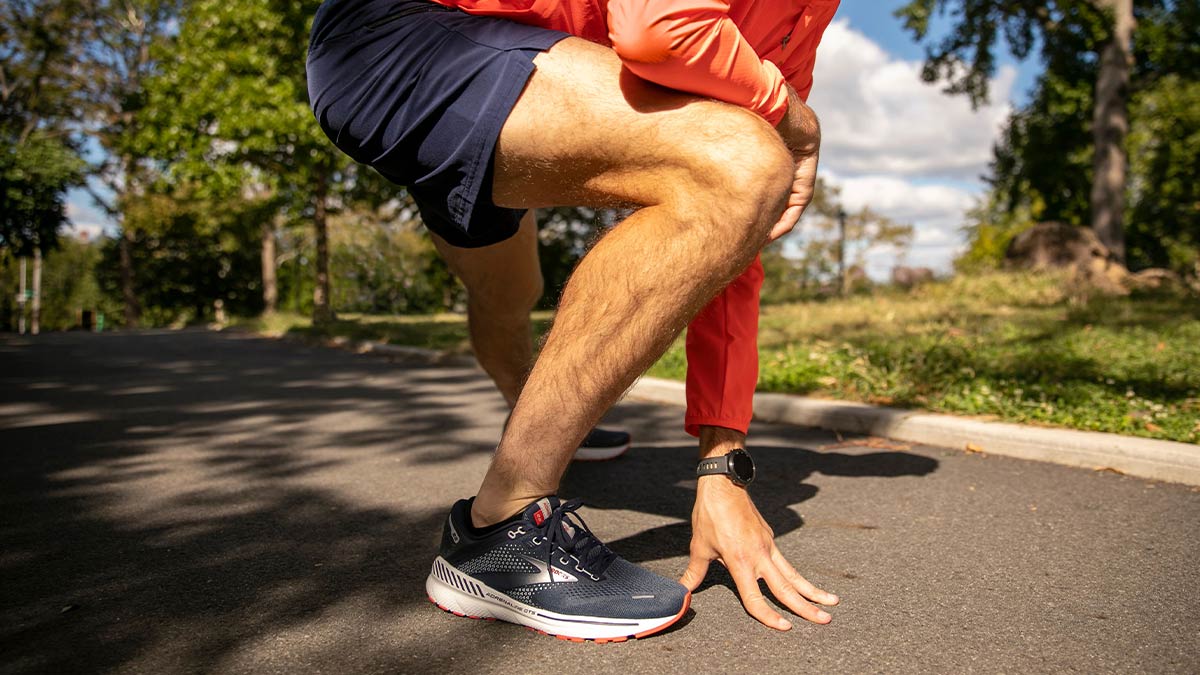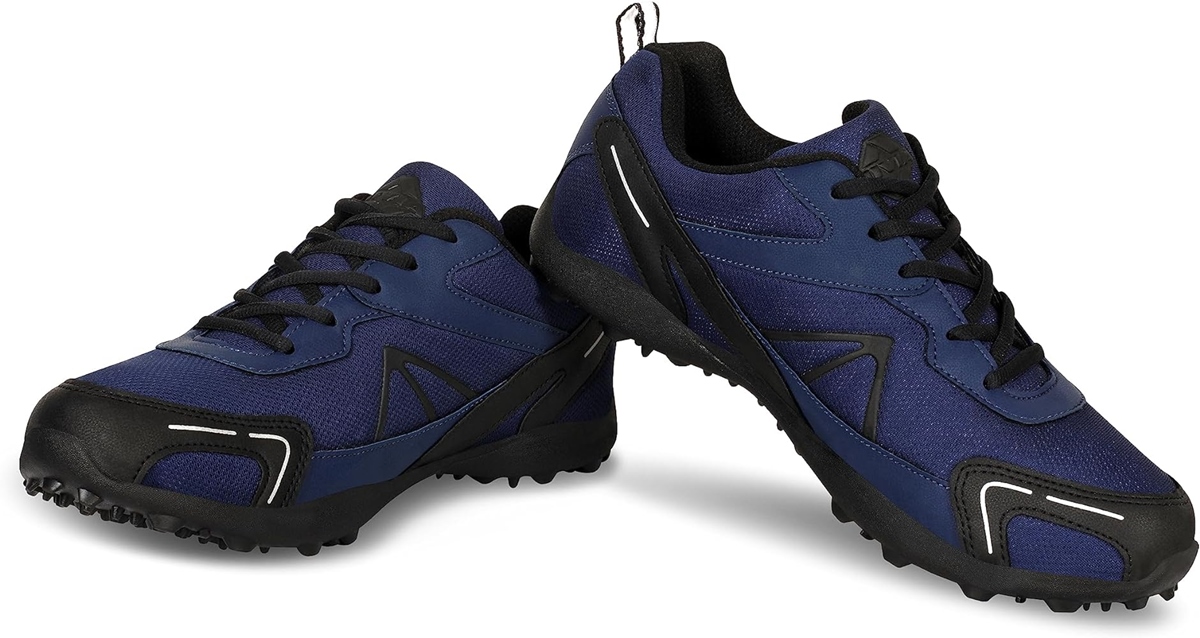

Featured
How Often Should I Get New Running Shoes
Modified: January 2, 2024
Discover how often you should replace your running shoes and stay ahead with our featured guide to ensure optimal performance and injury prevention.
Introduction
Welcome to the world of running! Whether you’re a seasoned athlete or just starting out, one thing that’s essential for a successful and enjoyable running experience is having the right pair of running shoes. Running shoes are not just another fashion statement; they are specifically designed to provide stability, cushioning, and support to help you achieve your running goals while minimizing the risk of injury.
But how often should you replace your running shoes? This is a common question that many runners have, and the answer may vary depending on several factors. In this article, we’ll explore the importance of proper running shoes, the factors that can affect the frequency of shoe replacement, and provide you with some guidelines and recommendations from running experts.
Your running shoes are your main piece of equipment, and investing in a good pair is crucial for your overall running performance. The right shoes can make a significant difference in your comfort, foot health, and ultimately, your running experience. It’s not just about looking stylish; it’s about having a shoe that supports your feet and allows you to perform at your best.
So, why is having the right pair of running shoes so important? The answer lies in the biomechanics of running. When you run, your feet absorb a considerable amount of impact with every stride. This impact can put stress on your joints, muscles, and ligaments, leading to potential injuries. Running shoes are designed with features such as cushioning and shock absorption to help reduce this impact on your body and provide support to your feet.
Furthermore, running shoes are designed with specific types of runners in mind. Some shoes are better suited for those with flat feet, while others are designed for runners with high arches. Choosing the right shoes that align with your foot type and running style can help improve your running efficiency and prevent discomfort or pain.
Now that we understand the importance of proper running shoes, let’s explore the factors that can affect the frequency of shoe replacement.
Importance of Proper Running Shoes
Having the right pair of running shoes is essential for several reasons. Not only do they provide comfort and support, but they also help reduce the risk of injury and improve your overall running performance. Let’s take a closer look at the importance of proper running shoes.
Comfort: Running shoes that fit properly and are designed with features like cushioning can significantly enhance your comfort while running. Ill-fitting shoes can lead to blisters, hot spots, and discomfort, making your running experience less enjoyable and potentially causing you to cut your runs short.
Foot Support: Each person has a unique foot structure, such as arch height and pronation (the natural inward rolling of the foot during the running gait). Proper running shoes are designed to provide support and stability that align with your specific foot type. This support helps distribute the load evenly and reduces stress on your feet, preventing issues like plantar fasciitis or shin splints.
Injury Prevention: Running puts a significant amount of impact on your body, especially your feet, ankles, knees, and hips. The right pair of running shoes can help absorb shock and provide cushioning, reducing the risk of stress fractures, tendonitis, and other common running injuries. They also promote proper alignment and encourage a more natural running gait, reducing the strain on your joints and muscles.
Performance Enhancement: When you have the right shoes that provide the necessary support and cushioning, you can run more efficiently. This means that you can maintain proper form and stride, expend less energy, and achieve better running times. Additionally, comfortable running shoes can boost your confidence and allow you to push yourself further, both mentally and physically.
When choosing running shoes, it is important to get fitted by a professional or knowledgeable salesperson. They can assess your foot type and running style to recommend the right shoe for you. It’s also essential to consider the terrain you’ll be running on; different shoes are better suited for road running, trail running, or track running. Additionally, make sure to replace your shoes as needed to maintain their performance and prevent injury.
In the next section, we will delve into the various factors that can affect the frequency of shoe replacement.
Factors Affecting Shoe Replacement Frequency
Several factors can affect the frequency at which you should replace your running shoes. Understanding these factors is crucial to ensure that you are running in shoes that provide optimal support and protection. Let’s explore the key factors that influence shoe replacement frequency:
Mileage: One of the primary factors to consider is the mileage you have logged in your running shoes. As a general guideline, most running experts recommend replacing your shoes every 300-500 miles. However, keep in mind that this is just an estimate and can vary depending on factors such as your body weight, running style, and the terrain you run on. Lighter runners may get more mileage out of their shoes, while heavier runners may need to replace them more frequently.
Running Surface: The type of surface you primarily run on can also impact the lifespan of your shoes. Running on hard surfaces, such as concrete or asphalt, can wear down the cushioning and traction of your shoes more quickly compared to softer surfaces like trails or treadmills. If you frequently run on harder surfaces, you might need to replace your shoes sooner to maintain optimal support and shock absorption.
Running Intensity: The intensity of your runs can also contribute to the wear and tear of your running shoes. If you regularly engage in high-intensity workouts, such as interval training or sprints, the increased impact and stress on the shoes can lead to faster deterioration. Consider replacing your shoes more frequently if you engage in intense workouts to ensure they continue to provide adequate support and cushioning.
Biomechanics: Your biomechanics, such as your foot strike pattern and pronation, can affect how quickly your shoes wear out. If you have a tendency to overpronate or underpronate, this can cause uneven wear on the shoes over time. It’s advisable to consult a podiatrist or running expert to assess your gait and provide guidance on the appropriate shoe type and replacement frequency based on your biomechanics.
Body Weight: Your body weight plays a role in how quickly your running shoes wear out. Heavier runners may experience more impact and compression on the shoes, leading to faster breakdown of cushioning and support. If you fall into the category of a heavier runner, you may need to replace your shoes more frequently to maintain optimal performance and protection.
It’s important to note that these factors are guidelines and may vary from person to person. Pay attention to the overall condition of your shoes and how they feel during your runs. If you notice significant wear and tear, loss of cushioning, or any discomfort or pain while running, it’s a good indication that it’s time to replace your shoes, regardless of the mileage. Remember, your running shoes are an investment in your running journey and overall foot health.
In the next section, we will discuss the signs of wear and tear to look out for in your running shoes.
Mileage-Based Shoe Replacement Guidelines
When it comes to determining when to replace your running shoes, many runners rely on mileage-based guidelines. While these guidelines provide a helpful starting point, it’s important to remember that they are not set in stone and should be adjusted based on individual factors. Here are some mileage-based shoe replacement guidelines to consider:
300-500 Miles: As a general rule of thumb, most running experts recommend replacing your running shoes every 300-500 miles. This range is based on the average lifespan of the cushioning materials in the shoes. However, it’s crucial to understand that the specific mileage can vary depending on several factors such as your body weight, running style, and the type of shoes you wear.
Lightweight Shoes: If you wear lightweight running shoes, which typically have less cushioning and are designed for faster-paced running, they may have a shorter lifespan compared to more cushioned trainers. Lightweight shoes are often built for speed and may wear out more quickly, so you may need to replace them sooner, even before reaching the 300-mile mark.
Heavier Runners: If you are on the heavier side, it’s important to note that the impact and compression placed on the running shoes can cause them to wear out faster. As a result, heavier runners may need to replace their shoes on the lower end of the mileage range or even sooner to maintain optimal cushioning, support, and protection.
Trail Running: If you frequently run on trails, the uneven terrain and rough surfaces can accelerate the wear and tear on your shoes. Trail running shoes are often designed with more durable materials and aggressive tread patterns to withstand the demands of off-road running. However, they may still require replacement earlier than traditional road running shoes due to the increased stress and impact they endure.
Listen to Your Body: While mileage is a useful guideline, it’s important to pay attention to your body and how your shoes feel during your runs. If you start experiencing discomfort, pain, or notice a decline in performance, it may be a sign that your shoes are no longer providing adequate support and cushioning, even if you haven’t reached the recommended mileage threshold. Trust your instincts and consider replacing your shoes earlier if needed.
It’s worth noting that these mileage-based guidelines are not definitive rules. Every runner is different, and factors such as running form, running frequency, and individual biomechanics can impact the lifespan of your shoes. Remember to regularly inspect your shoes for any signs of wear and tear and invest in a new pair when necessary to continue enjoying the benefits of proper support and protection.
In the next section, we will discuss the signs of wear and tear to look out for in your running shoes.
Signs of Wear and Tear in Running Shoes
Over time, running shoes inevitably experience wear and tear from the miles you log. It’s crucial to recognize the signs of deterioration in your shoes to prevent running in worn-out footwear that can lead to discomfort and an increased risk of injury. Here are some key signs to look out for:
Worn-out Outsole: The outsole of your running shoes, which is the bottom part that makes contact with the ground, can wear down over time. Inspect the tread pattern to see if it is significantly worn or if any sections are completely smooth. A worn-out outsole can reduce the traction and grip of your shoes, especially on wet or slippery surfaces.
Collapsed Midsole: The midsole, which is the layer between the outsole and the upper, provides cushioning and shock absorption. Over time, the midsole can break down and lose its ability to provide adequate cushioning. Look for signs of excessive compression or if the midsole feels less responsive or less supportive than when the shoes were new.
Visible Creases: Pay attention to any visible creases along the midsole or upper. Excessive creasing can indicate that the materials are weakening and losing their structural integrity. These creases may lead to discomfort, irritation, or even blisters during your runs.
Excessive Heel Wear: Check the back of your shoes for signs of excessive wear on the heel area. If the heel shows notable wear, such as a flattened or uneven surface, it may indicate that the shoes have lost their stability and shock absorption, potentially causing discomfort or altering your running gait.
Loose or Worn Laces: While laces can be easily replaced, worn or fraying laces can be a sign that your shoes are reaching the end of their lifespan. It’s important to ensure that your laces are secure and in good condition to maintain a proper fit and prevent any accidents or injuries during your runs.
Uneven Wear: Check for any uneven wear patterns on the outsole or midsole, such as one side of the shoe wearing down faster than the other. Uneven wear can indicate imbalances in your running gait or foot strike, potentially leading to discomfort or even injuries. If you notice consistent asymmetrical wear, it may be a sign that you need to address any underlying biomechanical issues and consider replacing your shoes.
Remember, it’s important to regularly inspect your shoes for these signs of wear and tear, not just rely on mileage alone. If you notice any of these signs, it’s time to consider replacing your running shoes to maintain the necessary support, cushioning, and protection for your feet. Investing in a new pair will not only improve your comfort and performance but also reduce the risk of potential injuries.
In the next section, we will discuss the impact of biomechanical changes and when to consider shoe replacement.
Biomechanical Changes and Shoe Replacement
Your running shoes play a vital role in supporting your unique biomechanics and ensuring optimal comfort and performance. However, it’s important to recognize that as your body changes over time, so too can your biomechanics. These changes can have an impact on your running gait and foot strike pattern, which may necessitate a reevaluation of your shoe needs and replacement strategies. Let’s dive into the relationship between biomechanical changes and shoe replacement:
Foot Strike: Your foot strike pattern refers to how your foot initially contacts the ground when running. Over time, your foot strike may naturally evolve due to various factors such as improvements in running form or changes in fitness level. For example, you may transition from a heel strike to a midfoot or forefoot strike. These changes can alter the distribution of forces and impact points on your shoes. It’s essential to reassess your shoe needs and potentially consider different types of shoes that align with your updated foot strike pattern.
Pronation: Pronation is the inward rolling motion of your foot as it transitions from heel strike to toe-off. Changes in pronation can occur due to factors like age, weight loss or gain, or muscle imbalances. If you notice a significant change in your pronation, it’s important to consult with a podiatrist or running specialist to assess your gait and determine if your current shoes are still suitable for your updated biomechanics.
Arch Height: Another factor to consider is the change in arch height. Your arches can naturally flatten or become more pronounced over time, impacting the distribution of weight and shock absorption during running. If you have high arches, you may require more cushioning, while flat feet may benefit from additional support. Reevaluate the level of arch support provided by your current shoes to determine if adjustments or replacements are necessary to accommodate your changing arch height.
Injury Prevention: Biomechanical changes can also influence your risk of injury. If you notice discomfort or pain in specific areas, such as the knees, shins, or ankles, it may indicate a discrepancy between your evolving biomechanics and the support provided by your current shoes. Don’t ignore these warning signs, as they could lead to overuse injuries. Seek professional advice to assess your gait and determine whether shoe replacement or alternative footwear options tailored to your biomechanical needs are necessary for injury prevention.
Regularly reassessing your biomechanics and their alignment with your running shoes is crucial for maintaining comfort, performance, and injury prevention. If you experience noticeable changes in your foot strike, pronation, or arch height, consult with a running specialist or podiatrist who can provide expert guidance on whether shoe replacement or adjustments are necessary. By addressing these biomechanical changes and ensuring your shoes cater to your evolving needs, you can continue running with confidence and minimize the risk of discomfort or injury.
In the next section, we will discuss the importance of listening to your body and recognizing signs that indicate it’s time for shoe replacement.
Listening to Your Body: Signs to Look Out For
While guidelines and recommendations can provide helpful insights on when to replace your running shoes, it’s equally important to listen to your body and recognize the signs it gives you. Your body knows best how your shoes are supporting you and can provide valuable feedback about when it’s time for a replacement. Here are some key signs to look out for:
Discomfort or Pain: If you start experiencing discomfort or pain while running that you didn’t have before, it may be a clear indication that your shoes are no longer providing adequate support or cushioning. This discomfort can manifest as hot spots, blisters, or soreness in specific areas of your feet or legs. Don’t ignore these signals; they are your body’s way of telling you that it’s time for a shoe replacement.
Decreased Performance: A decline in your running performance, such as feeling sluggish, unable to maintain your usual pace, or experiencing difficulty in reaching your running goals, can be a sign that your shoes are no longer providing the necessary support or responsiveness. When your shoes lose their cushioning and support, it can affect your overall running efficiency and make it more challenging to perform at your best.
Unstable or Uneven Feel: If you notice that your shoes feel unstable or if you experience a sense of imbalance during your runs, it may be an indication of worn-out or deteriorating shoes. Uneven wear patterns or changes in the shoe’s structure can affect the stability and support they provide. Trust your instincts and if something feels off, consider replacing your shoes to avoid any potential injuries.
Increased Fatigue or Muscle Soreness: If you find that you’re feeling more fatigued than usual after your runs or experiencing excessive muscle soreness, it could be a sign that your shoes are no longer absorbing shock effectively. When the cushioning in your shoes begins to break down, your muscles and joints have to absorb more impact, leading to increased fatigue and post-run soreness.
Visible Signs of Wear: Take a visual inspection of your shoes and look for visible signs of wear and tear. This can include worn-out outsoles, flattened or compressed midsoles, creases, or any other noticeable signs that indicate the shoes have reached the end of their lifespan. If you see these signs, it’s a clear indication that a new pair of running shoes is in order.
Remember, your body is unique, and everyone’s running needs and preferences differ. While general guidelines are helpful, it’s ultimately crucial to listen to your body and pay attention to the signals it provides. If you notice any of these signs indicating that your shoes may no longer be providing the necessary support and cushioning, don’t hesitate to invest in a new pair. Your comfort, performance, and injury prevention depend on it.
In the next section, we will share some recommendations from running experts to help you make informed decisions about shoe replacement.
Recommendations from Running Experts
When it comes to shoe replacement, it can be helpful to seek advice from running experts who have extensive knowledge and experience in the field. Here are some recommendations from running experts to guide you in making informed decisions about when to replace your running shoes:
Regularly Assess Your Shoes: Running experts recommend assessing the condition of your shoes every few weeks or every 100 miles, even if you haven’t reached the typical mileage-based replacement threshold. Take the time to visually inspect your shoes for signs of wear and tear, including worn-out outsoles, compressed midsoles, or any other visible damage that could impact their performance.
Pay Attention to Your Body: Running experts emphasize the importance of listening to your body and being aware of any signs of discomfort, pain, or changes in performance. If you experience any of these issues, it may be an indication that your shoes are no longer providing the necessary support or cushioning. Don’t ignore these signals and consider replacing your shoes to prevent further discomfort or risk of injury.
Have Multiple Pairs: Some running experts suggest rotating between two or more pairs of running shoes. This can help extend the lifespan of each pair by allowing them to fully dry and recover between runs. Having multiple pairs can also provide variety in cushioning and support, giving your feet and lower body a break from repetitive stress and reducing the risk of overuse injuries.
Seek Professional Guidance: If you have concerns about your biomechanics, foot strike, or any other aspects of your running form, it’s wise to consult with a running specialist, podiatrist, or shoe fitting expert. They can assess your gait and provide personalized recommendations on the type of shoes that will best support your unique needs. Their expertise can help ensure that you make the right shoe choices and replace them at the appropriate time.
Keep a Running Log: Many running experts recommend keeping a running log to track your mileage, the dates you started using your shoes, and any signs of wear or discomfort you experience. This log can serve as a useful reference to identify patterns or trends in shoe lifespan and performance. It can also help you make more informed decisions about when to replace your shoes based on your individual running habits.
Consider Shoe Technologies: The running shoe industry is constantly evolving, with new technologies and advancements being introduced regularly. When considering shoe replacement, it can be beneficial to stay informed about the latest developments in shoe design. By understanding the technologies available and their potential benefits for your running style, you can make more informed choices when selecting your next pair of running shoes.
Remember, while these recommendations from running experts serve as helpful guidelines, it’s important to find what works best for you and your running journey. Each runner’s needs and preferences are unique, so trust your instincts and make decisions based on your personal comfort, performance, and injury prevention goals.
In the next section, we will conclude this article with a summary of the key points discussed.
Conclusion
Proper running shoes are essential for a comfortable and injury-free running experience. Knowing when to replace your running shoes is a crucial part of maintaining optimal support, cushioning, and performance. While mileage-based guidelines can provide a general framework, it’s equally important to listen to your body and be aware of signs that your shoes may need replacing.
Factors such as mileage, running surface, intensity, and your individual biomechanics can influence the lifespan of your shoes. Regularly assessing your shoes for signs of wear and tear, as well as paying attention to your body’s feedback, will help you make informed decisions about when to replace them.
Running experts emphasize the importance of regularly inspecting your shoes, seeking professional advice when needed, and considering factors like foot strike, pronation, and arch height. Additionally, having multiple pairs of running shoes and keeping a running log can contribute to prolonging the lifespan of your shoes and helping you make more informed decisions about when to replace them.
Remember, your running shoes are more than just a fashion statement – they are vital tools that protect and support your feet, minimizing the risk of injury and maximizing your running performance. So take care of your feet, listen to your body, and invest in high-quality running shoes that are appropriate for your needs and running style.
By staying attuned to your shoes and your body’s signals, you can continue to enjoy the countless benefits of running, while ensuring that your feet are protected and supported every step of the way.
